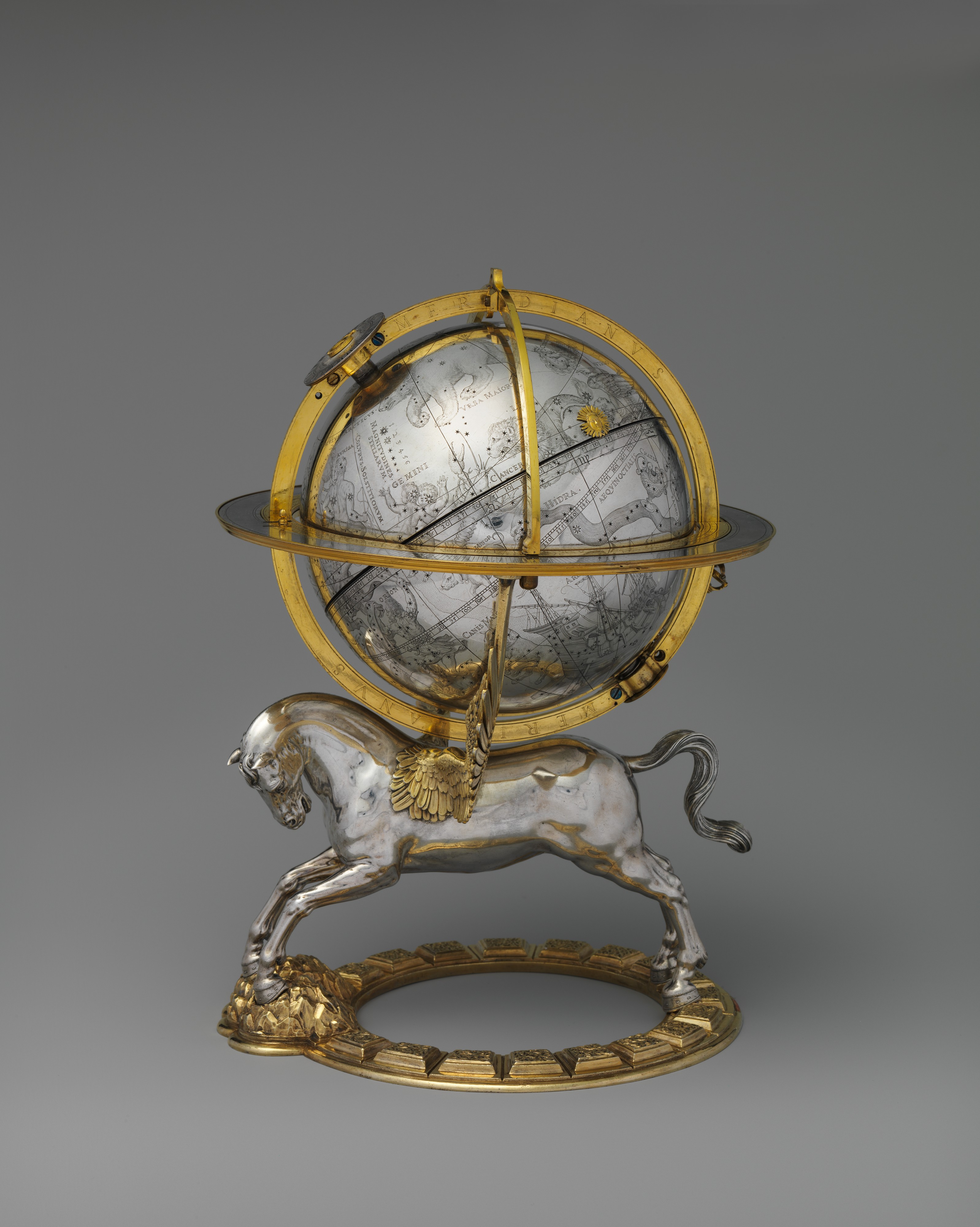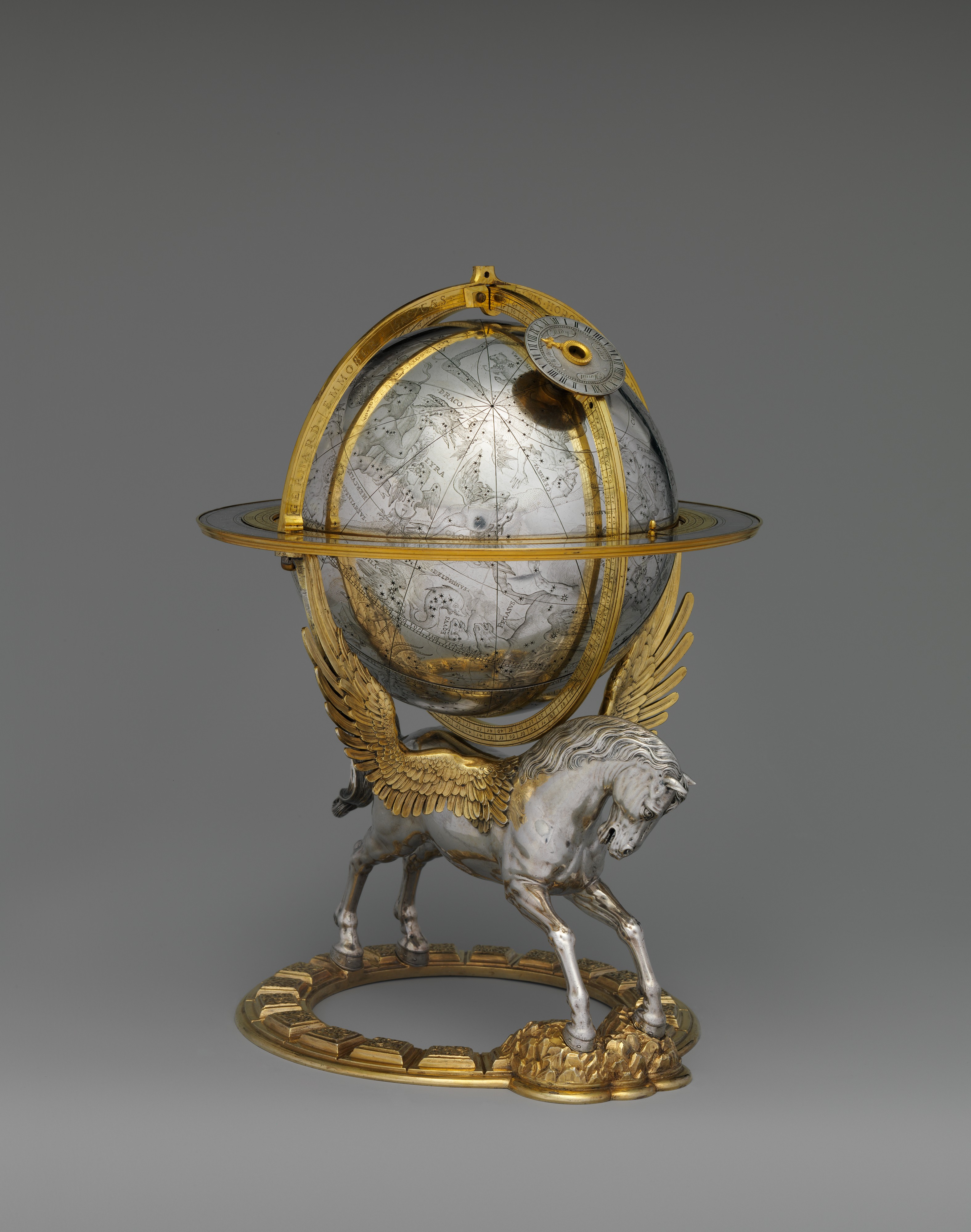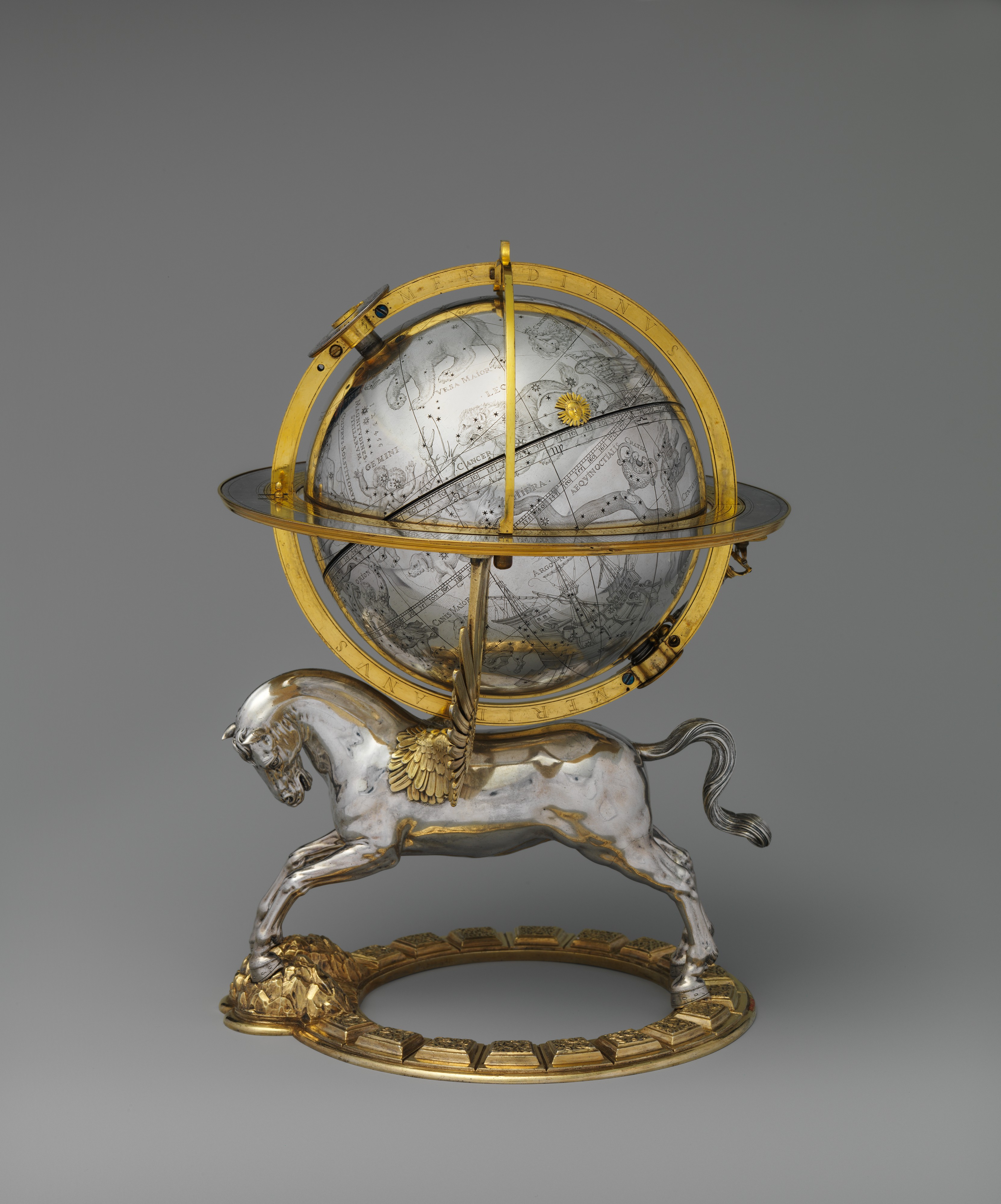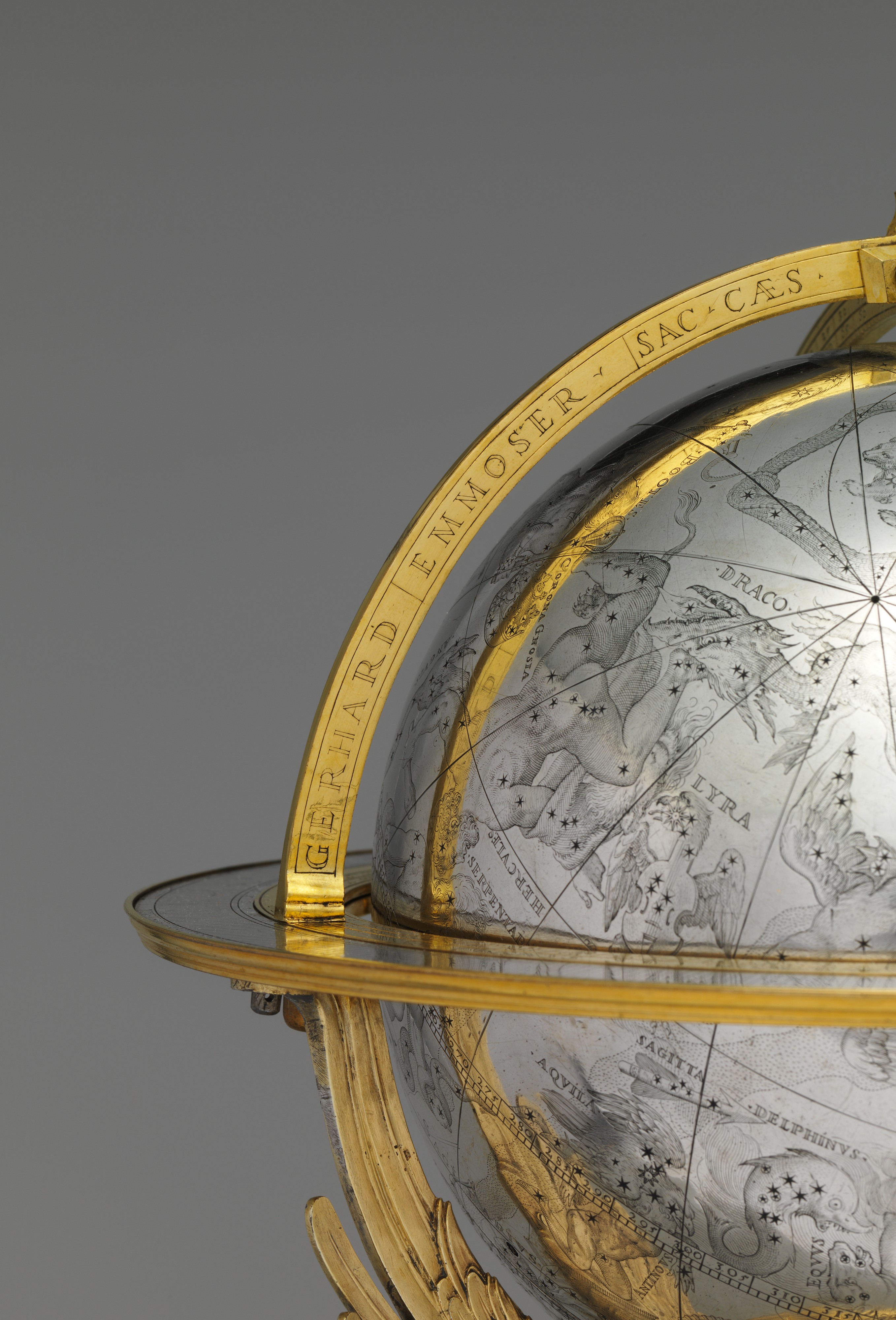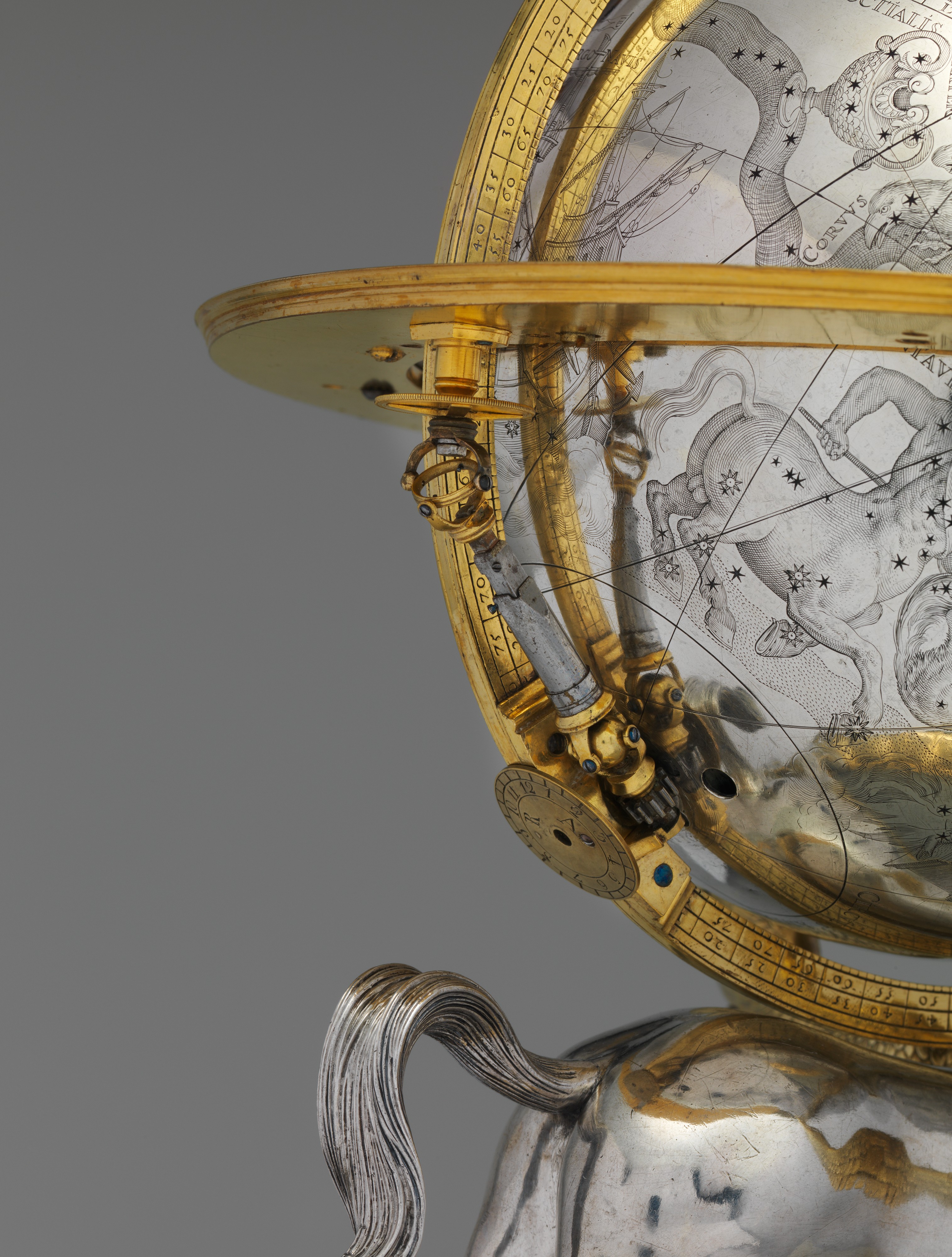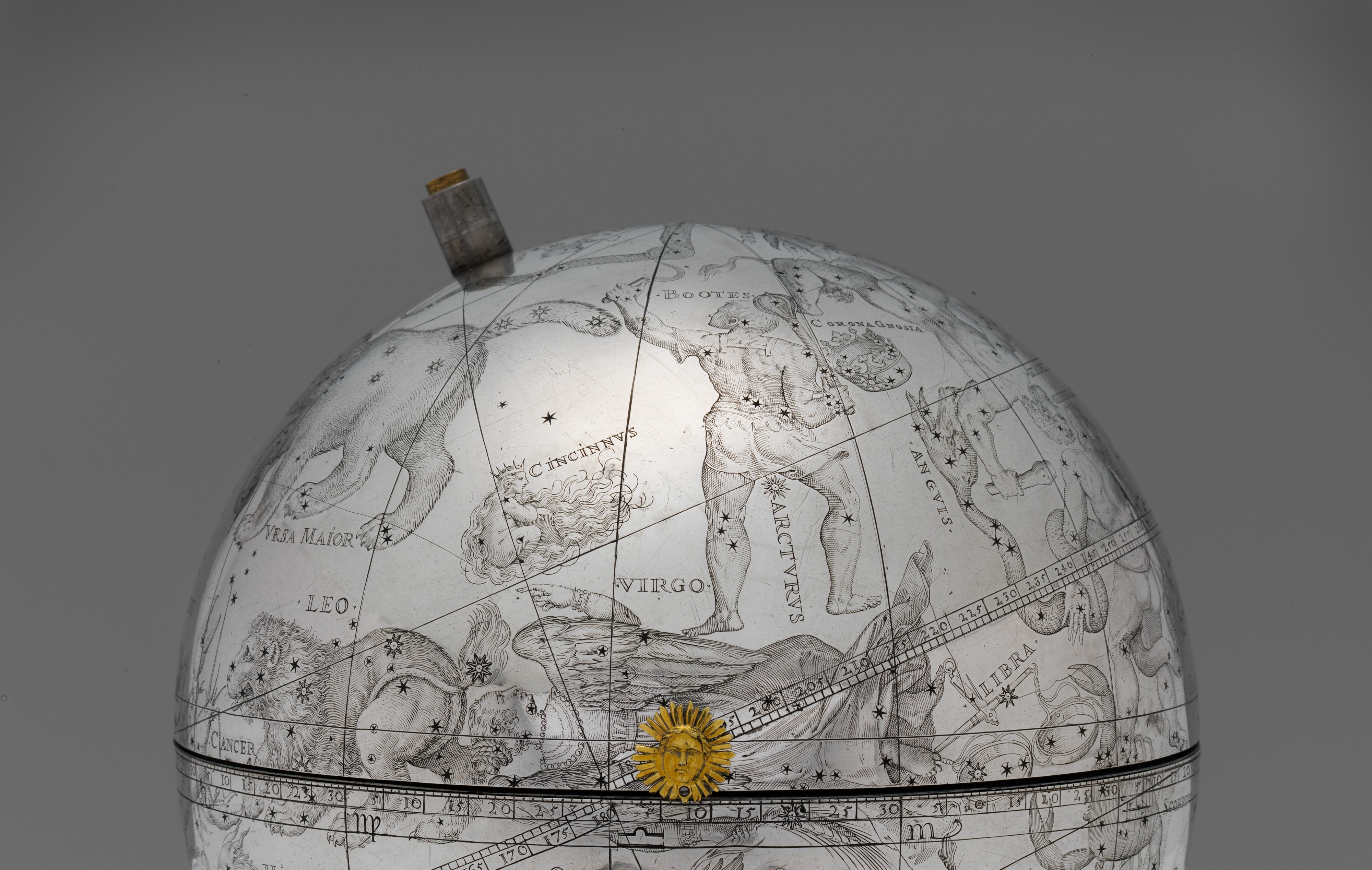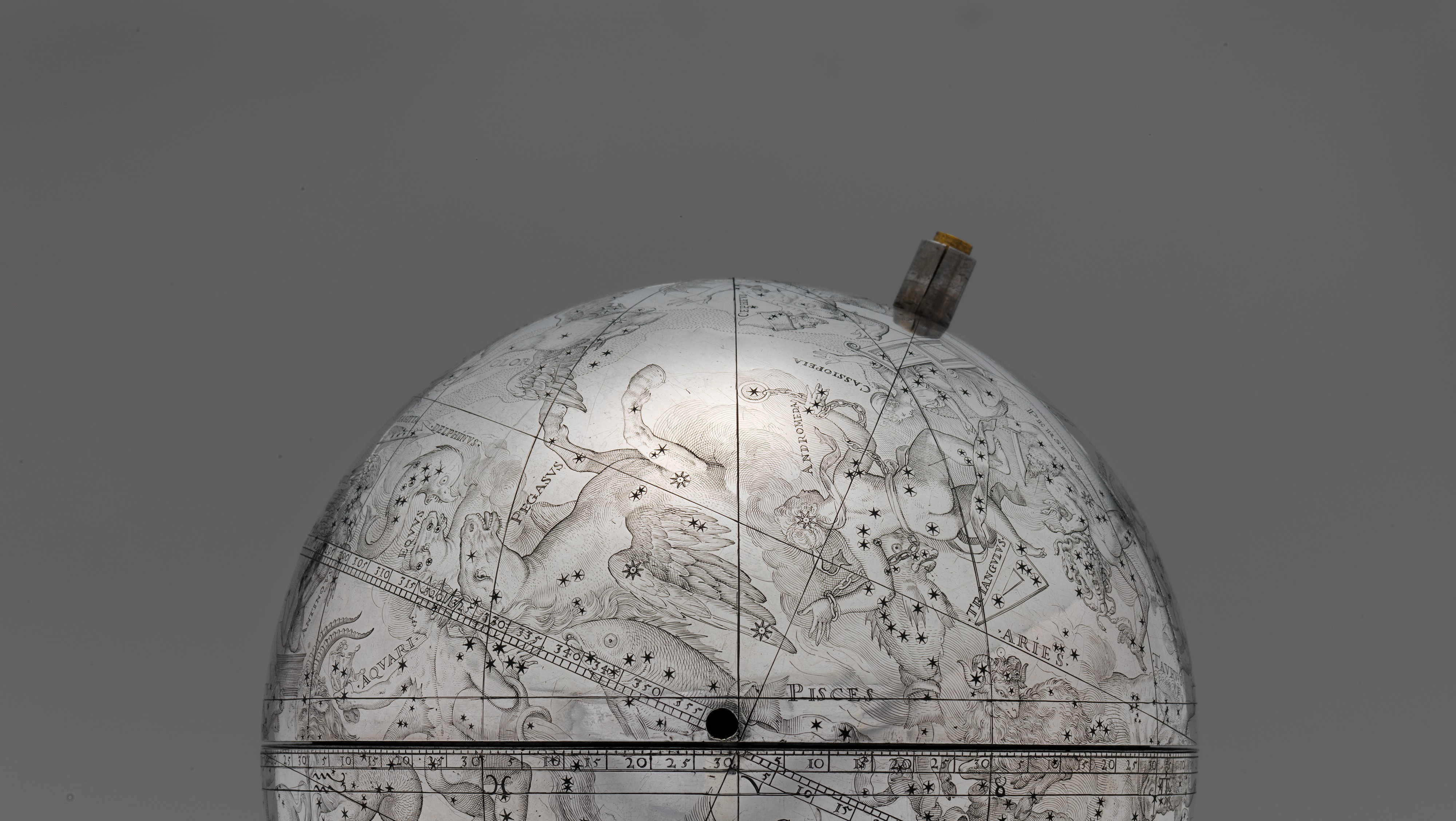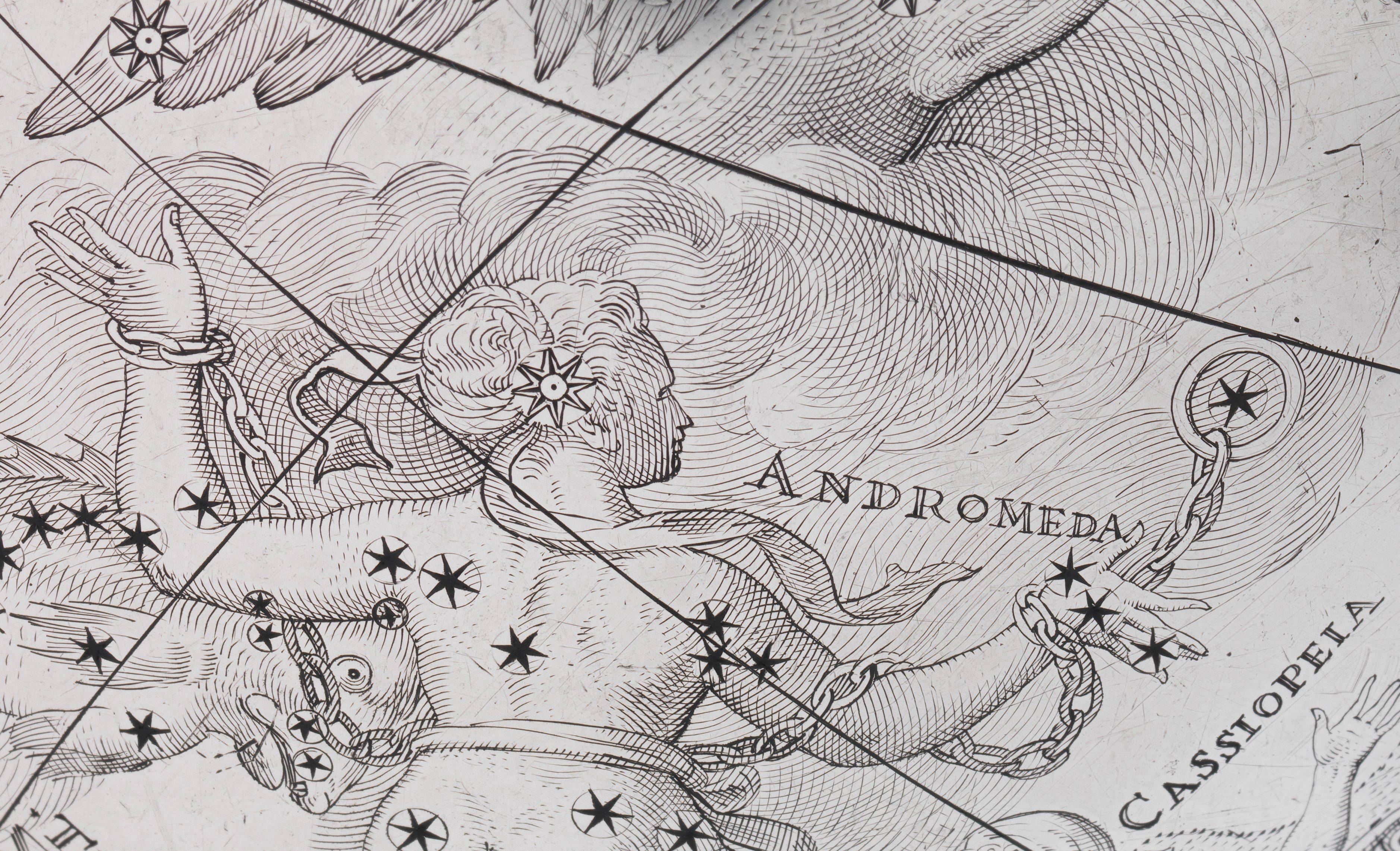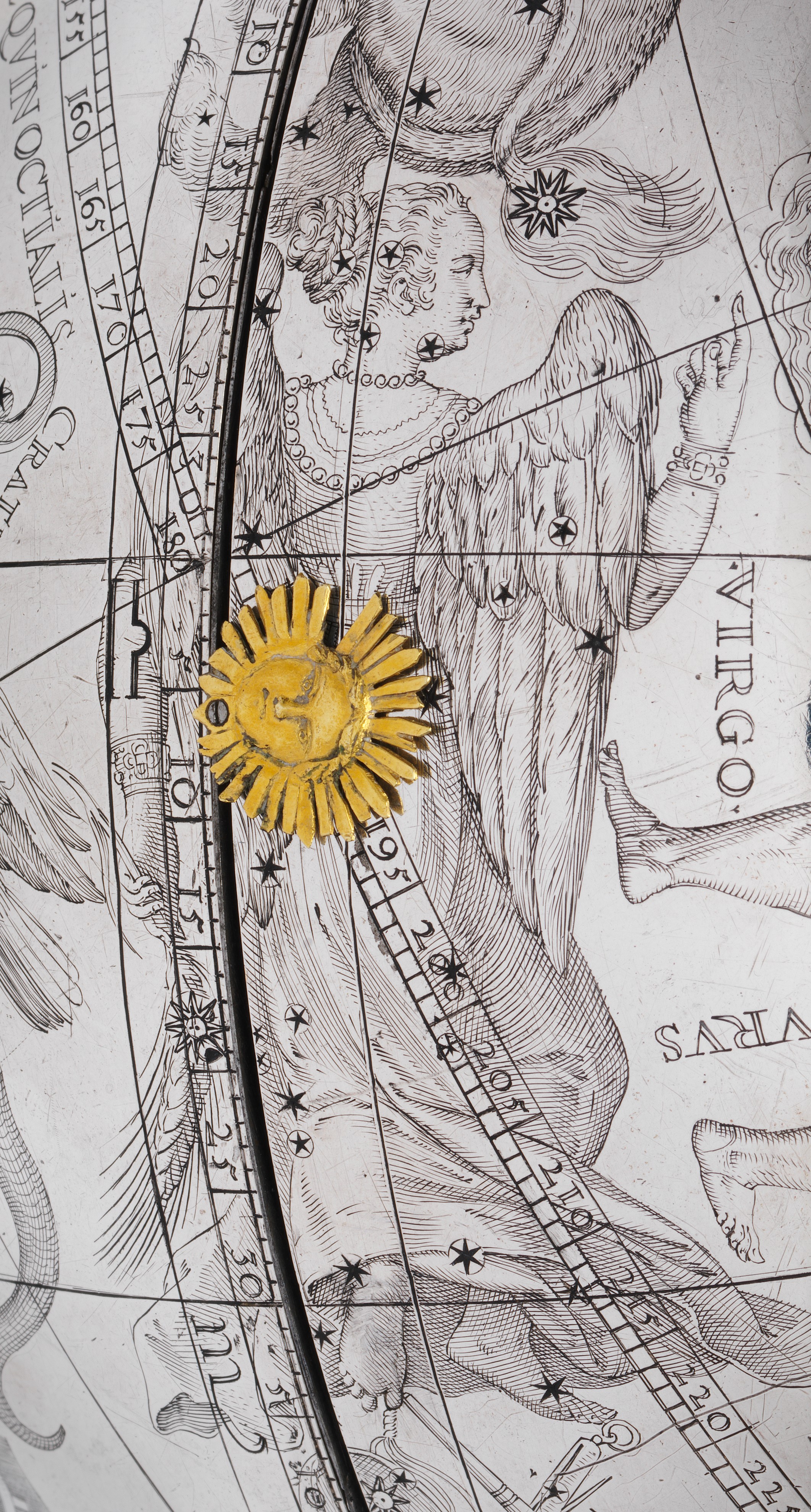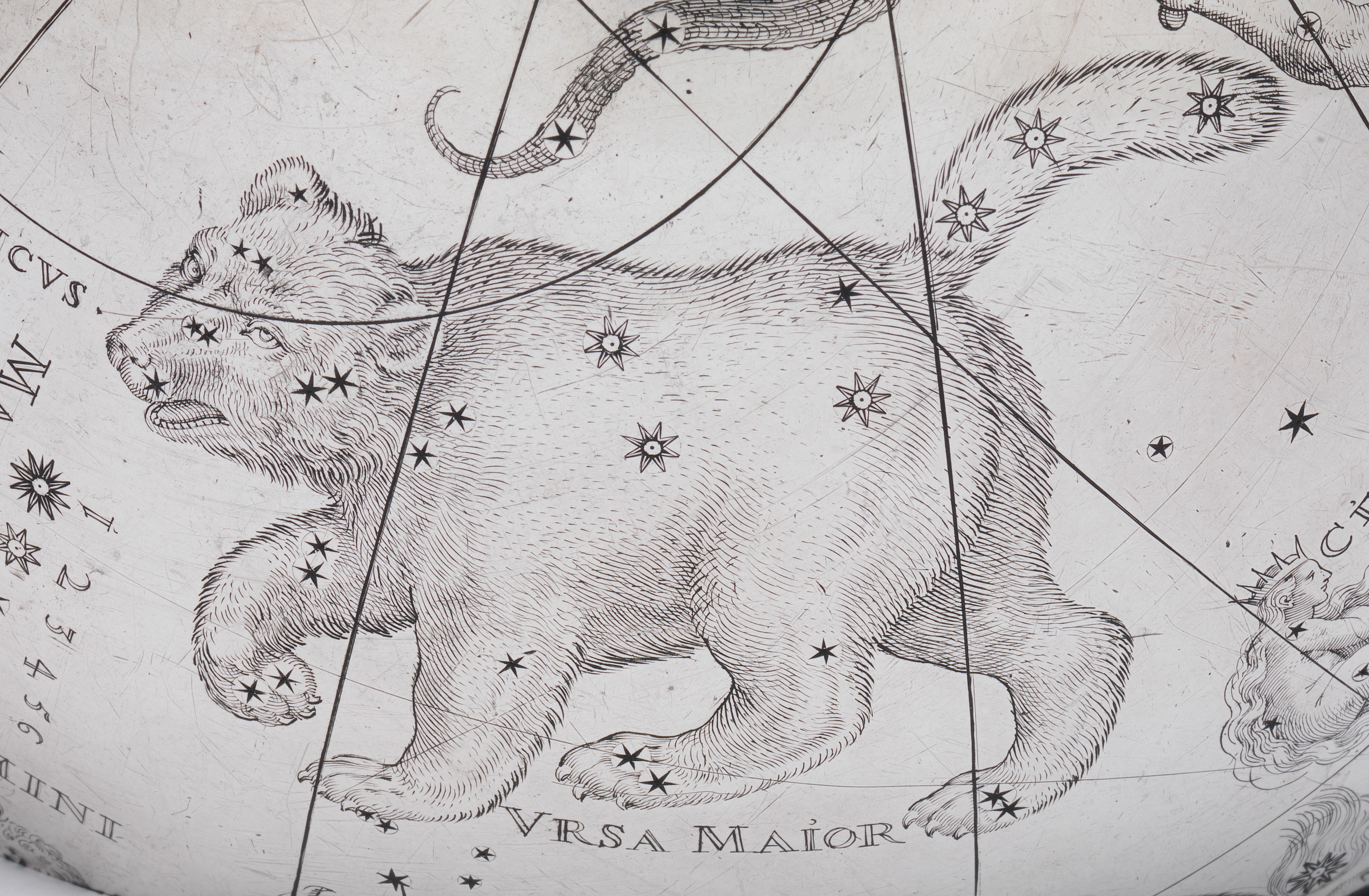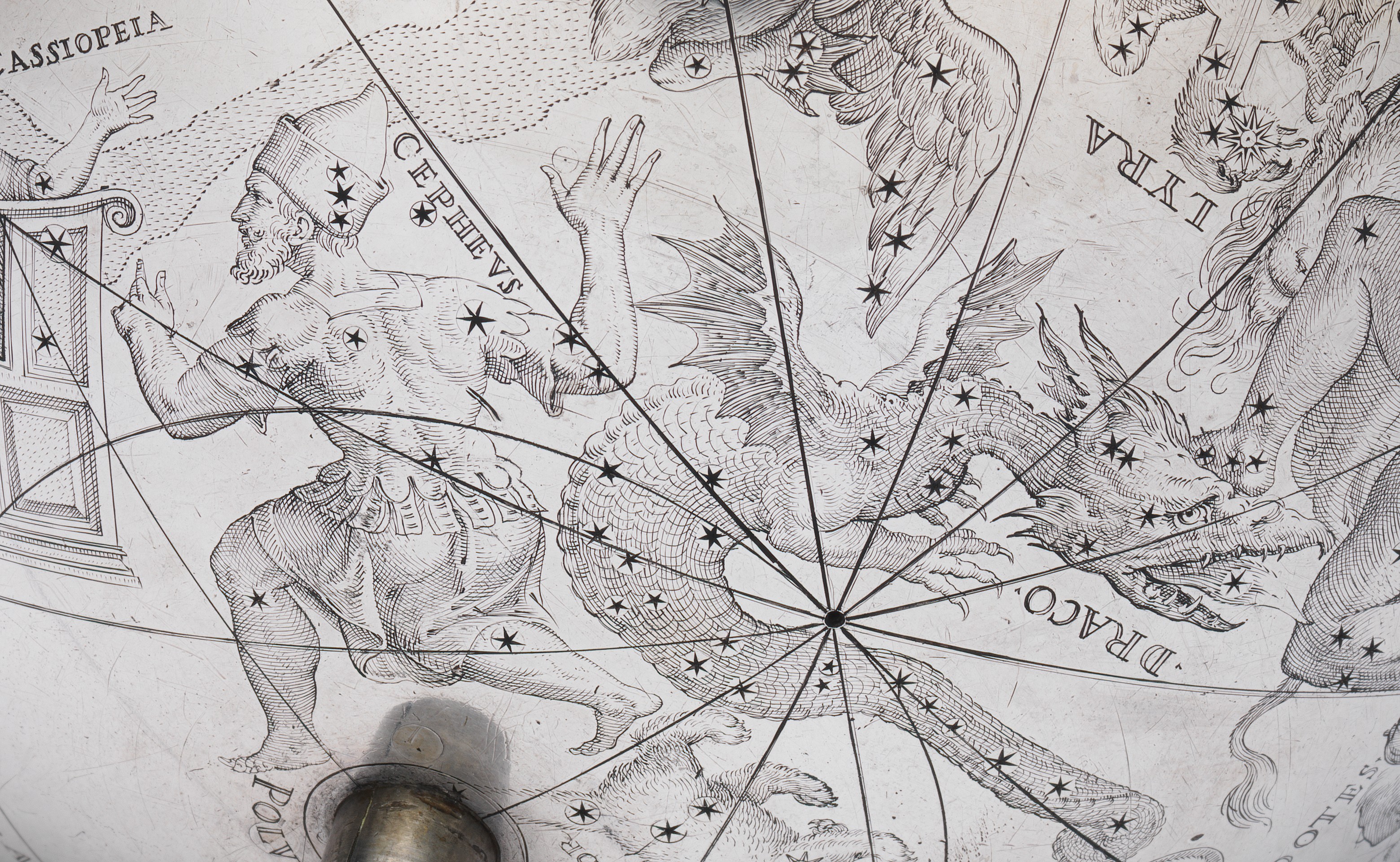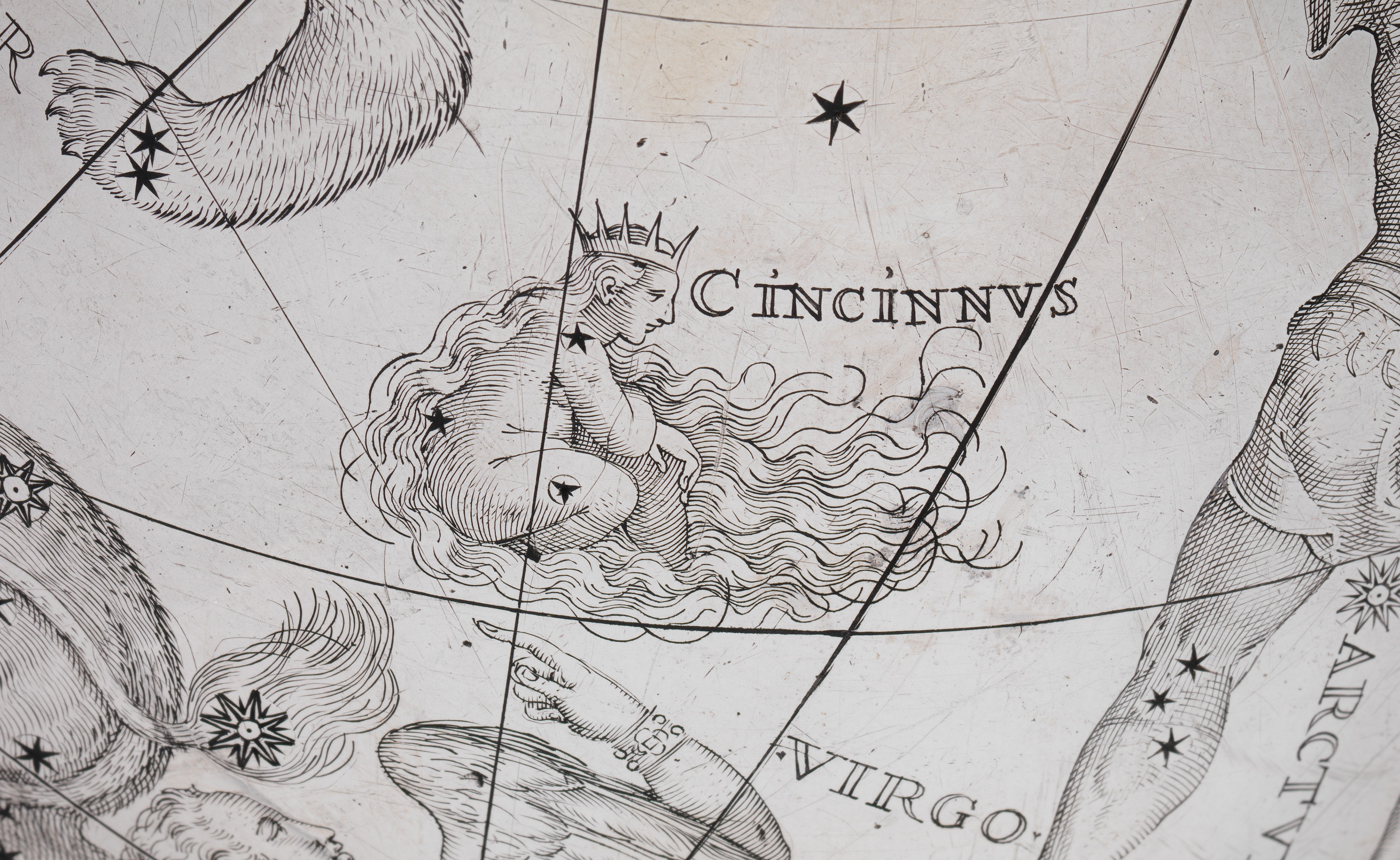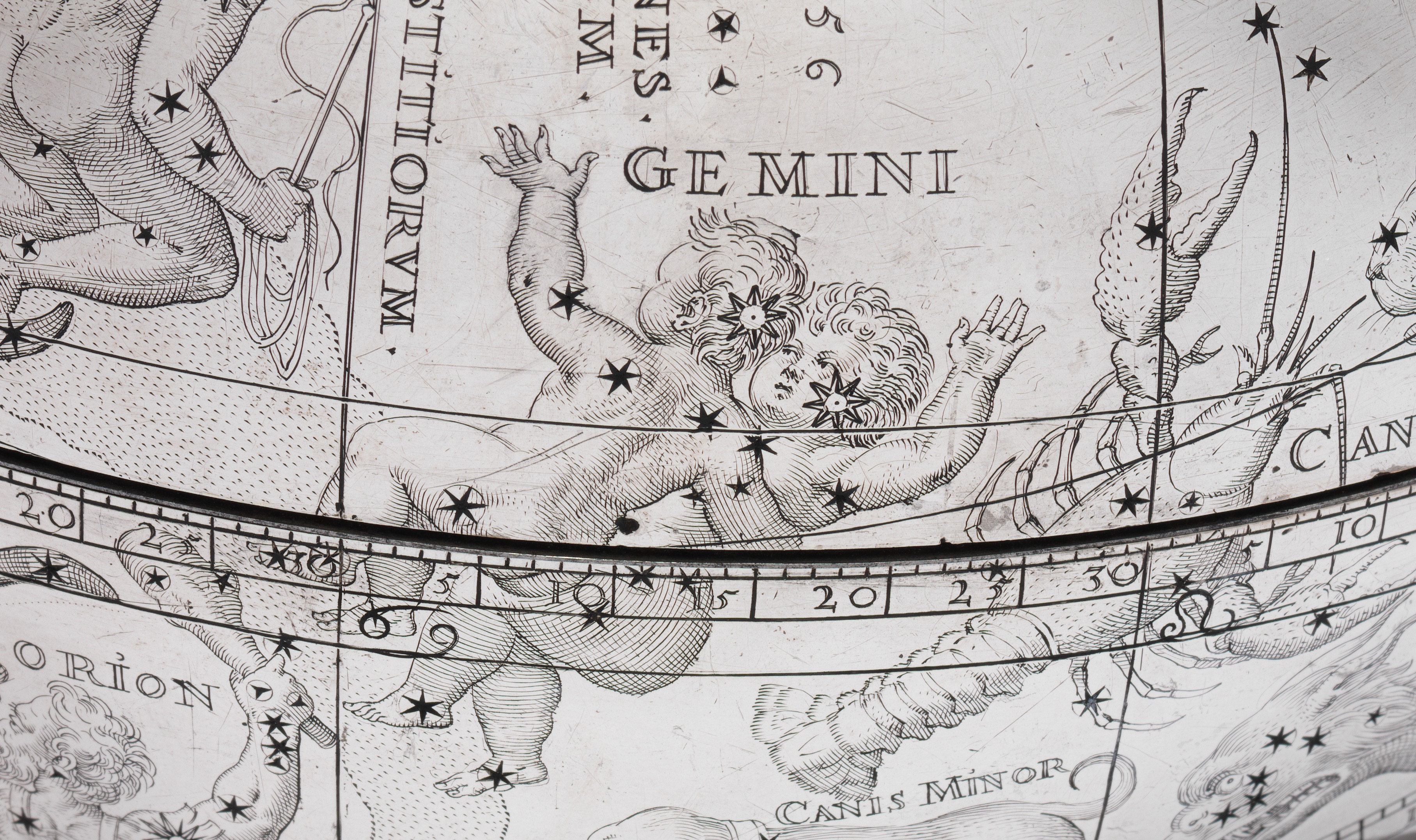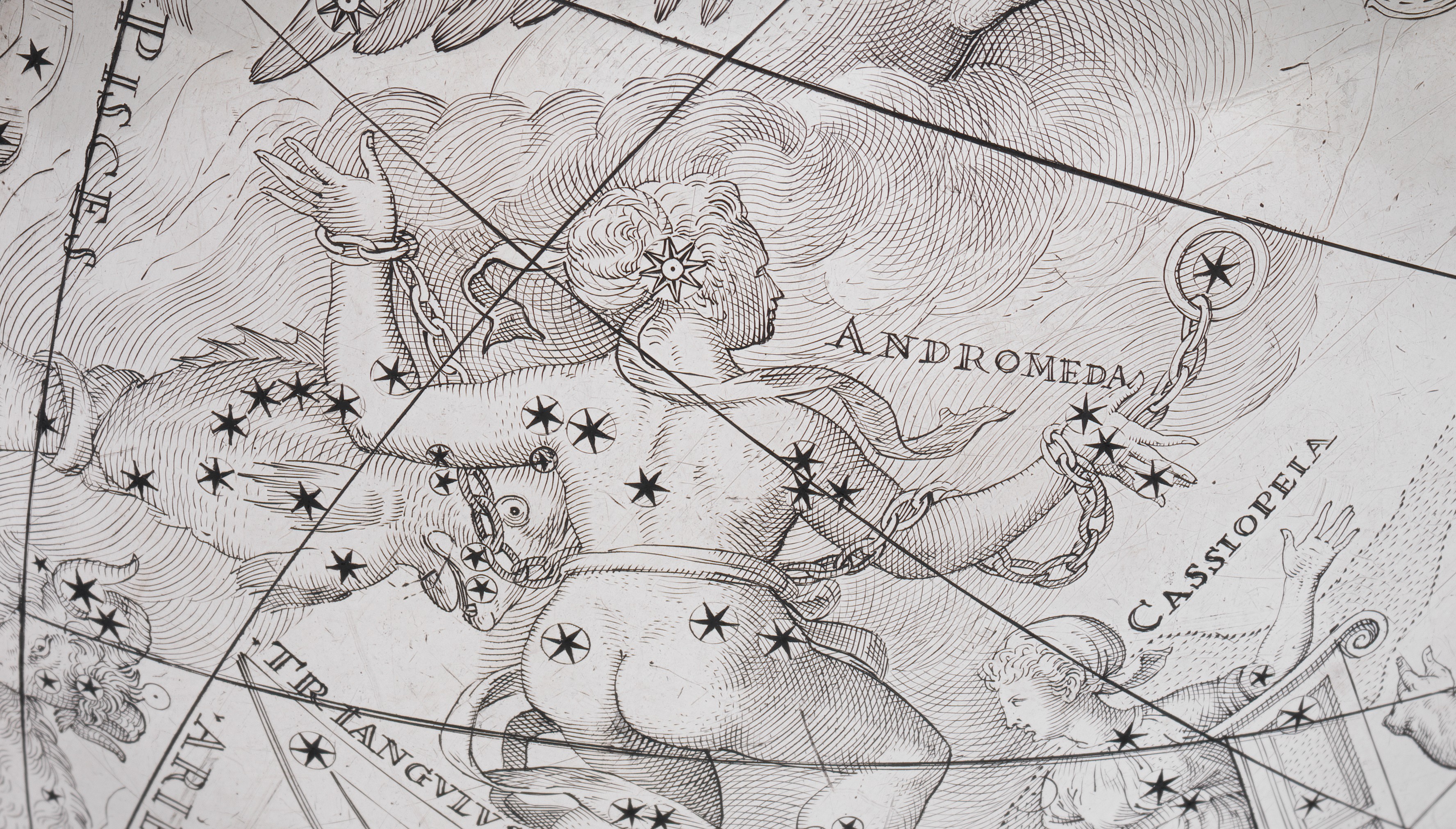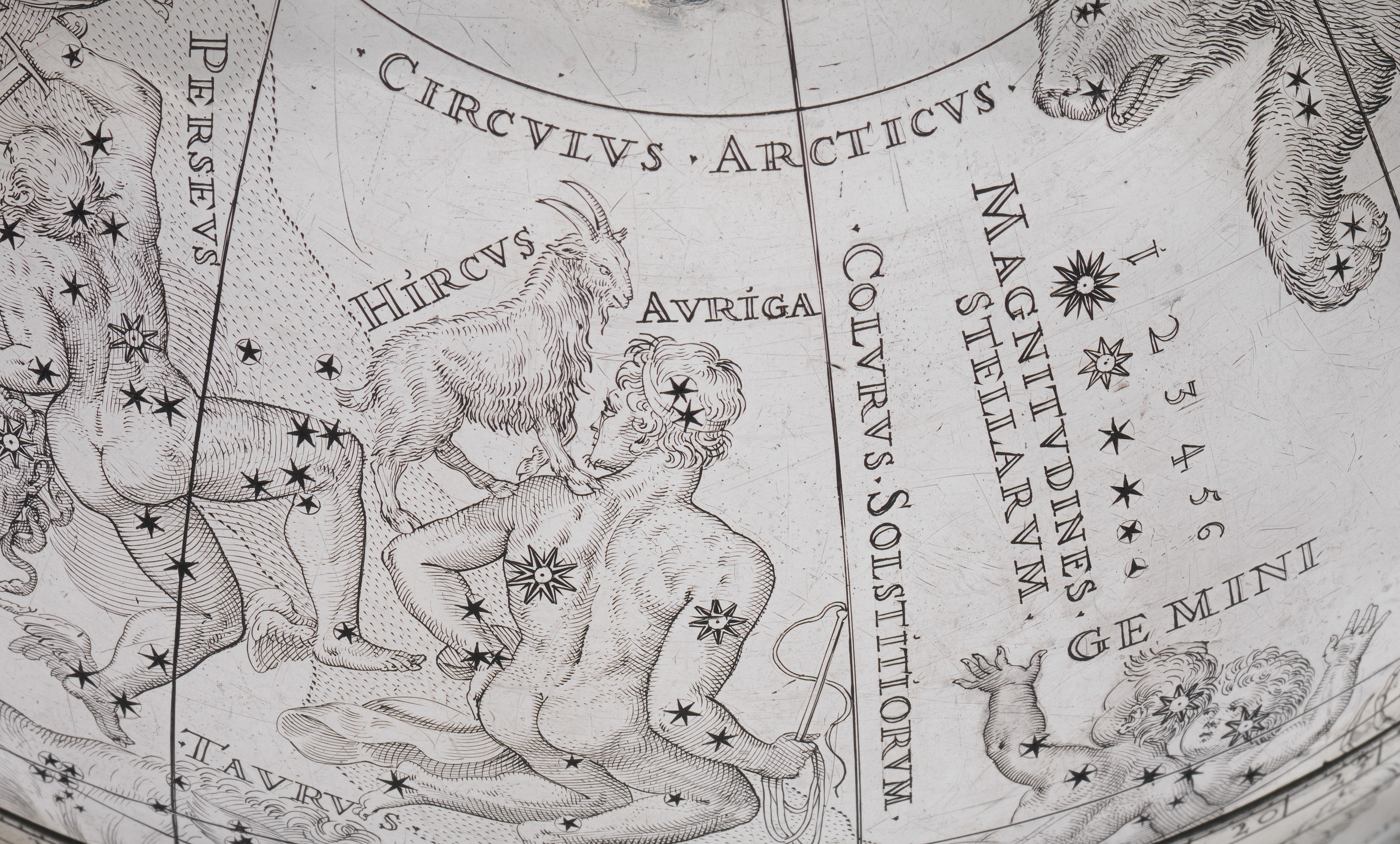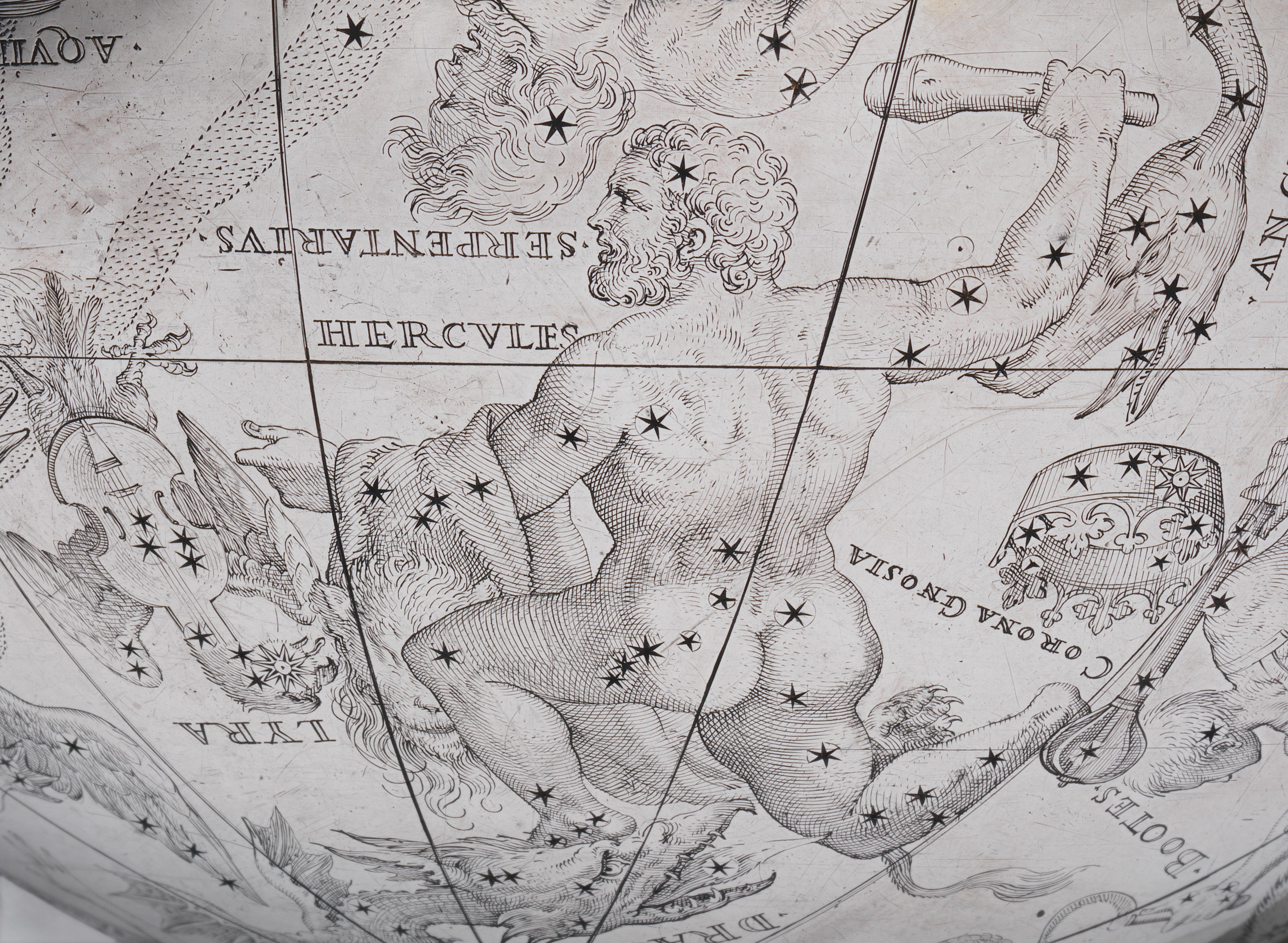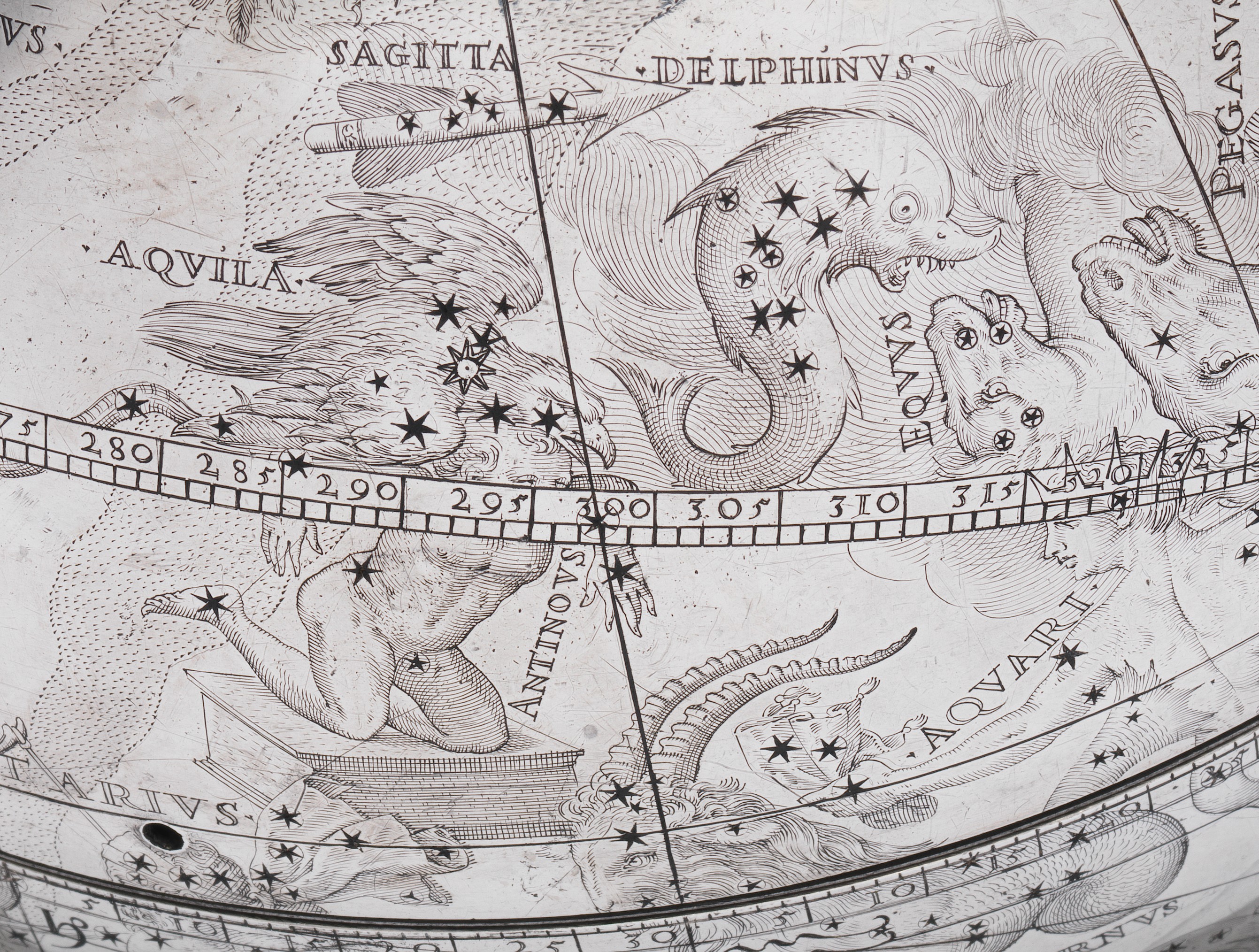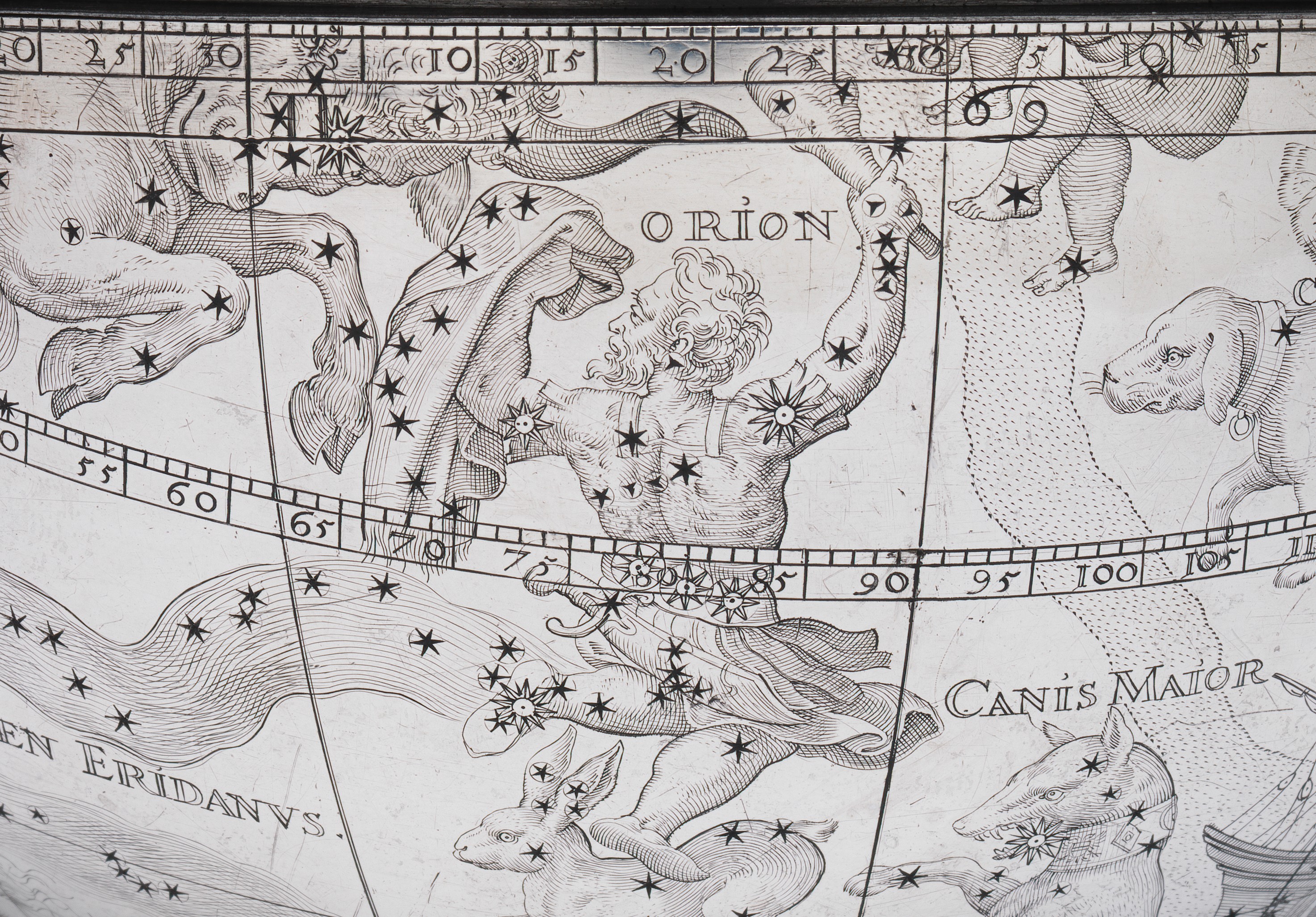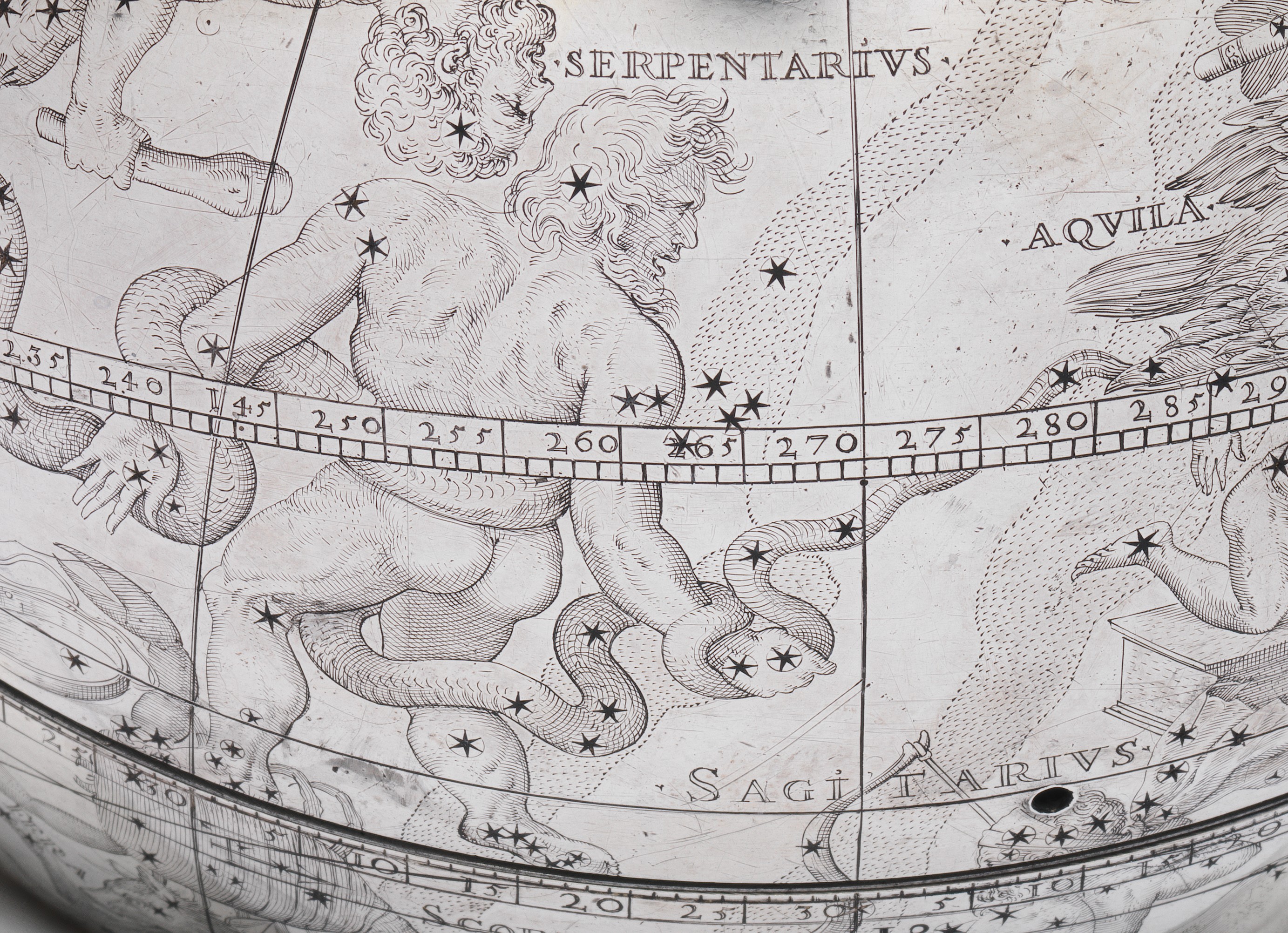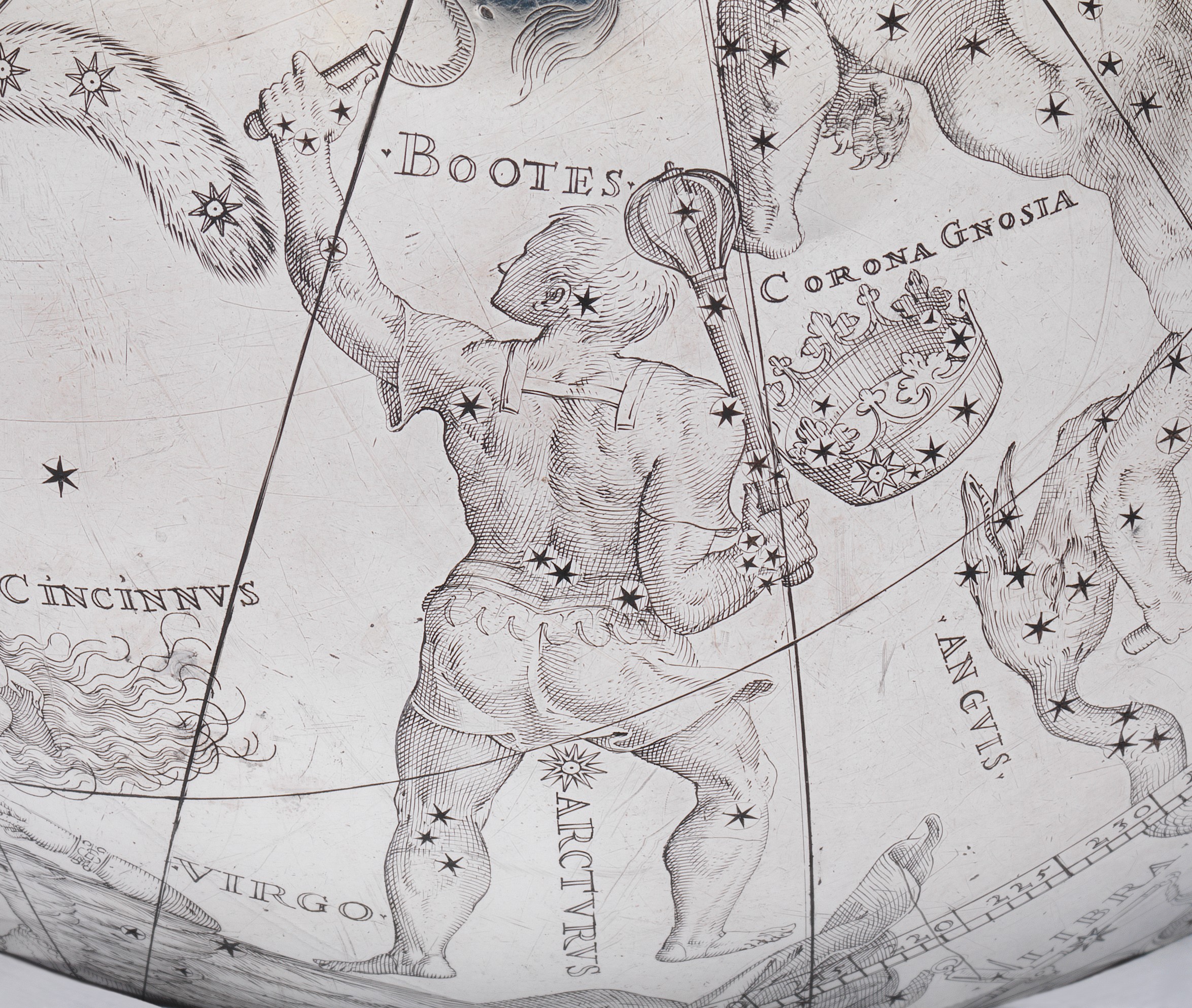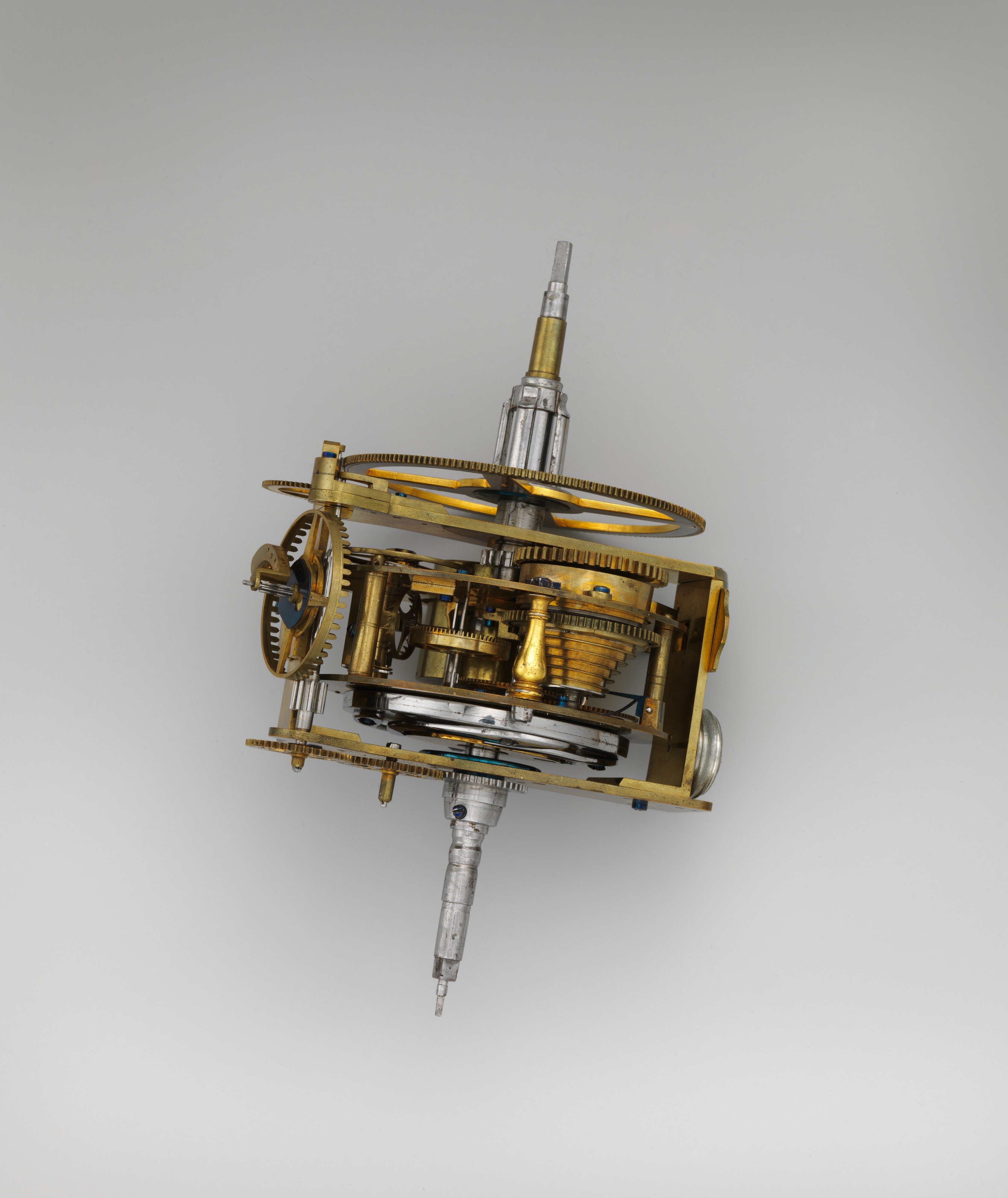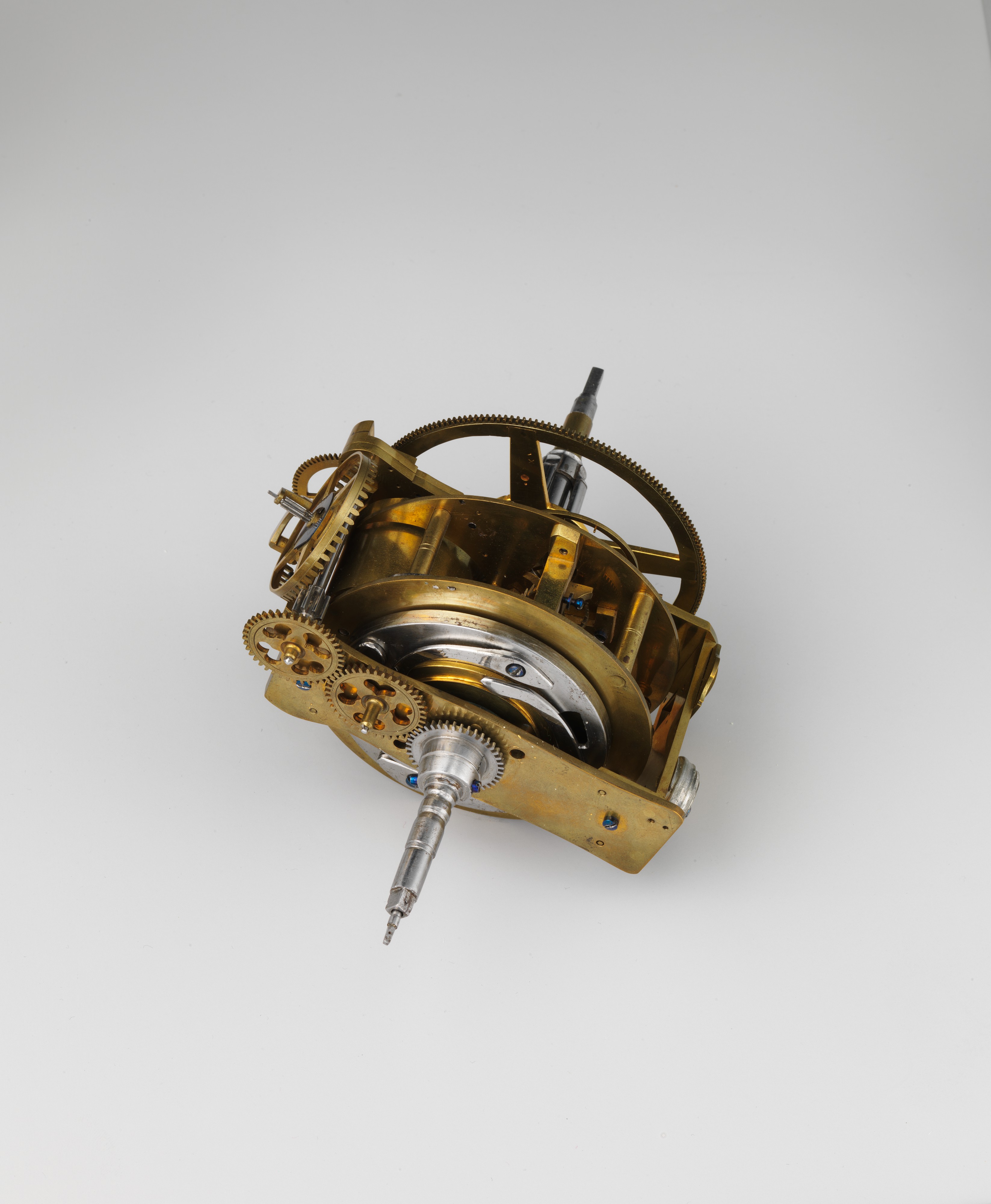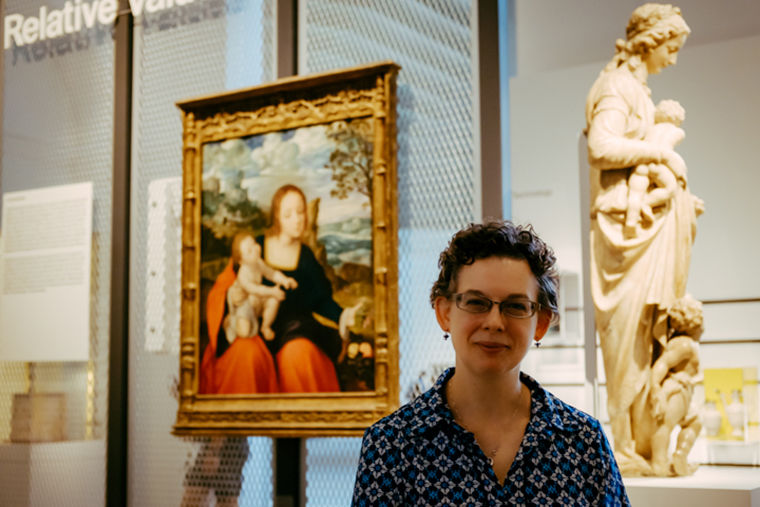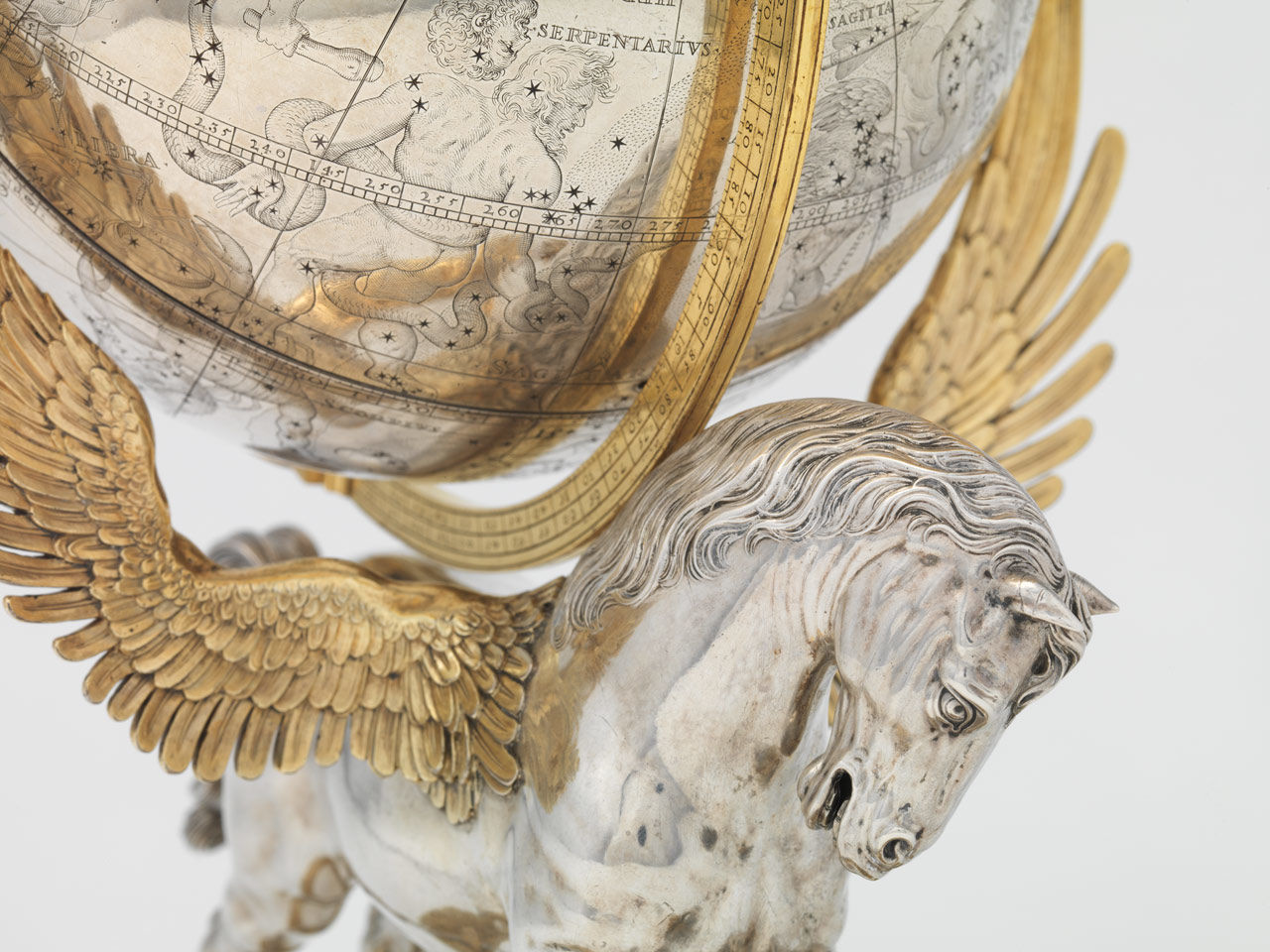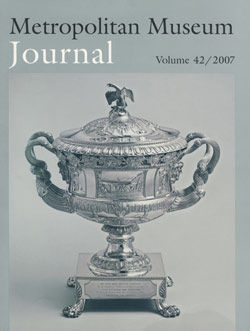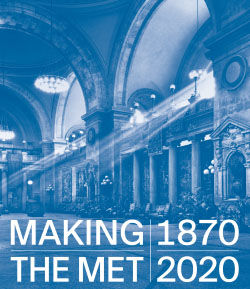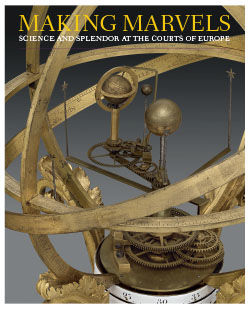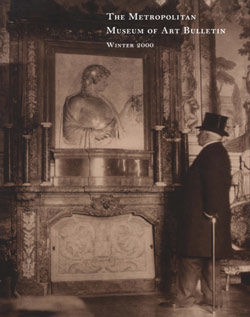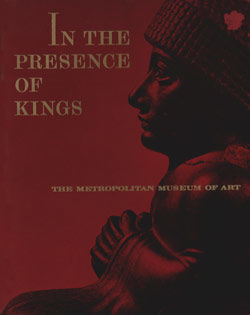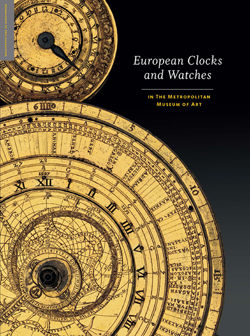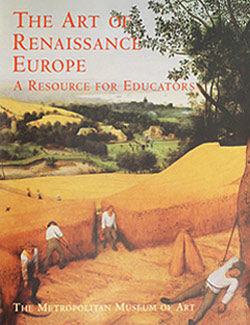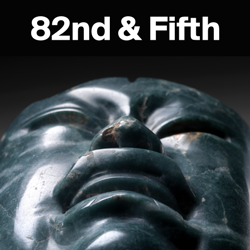Celestial globe with clockwork
Gerhard Emmoser German
During the politically charged period of the Reformation, when one’s faith could determine life or death, the Catholic clockmaker Gerhard Emmoser was summoned by the nearly bankrupt Lutheran elector Otto Henry, who had just inherited the prosperous Electoral Palatinate and could thus engage his passion for art patronage.[2] Their relationship provides a good example of how princely ambitions and rarified artistic abilities were seemingly exempt from and could easily cross these otherwise dangerous religious fault lines. The Lutheran elector invited Emmoser to join the mathematician Philipp Imser in Tübingen. Imser was at that time constructing a planetary clock with complexities and time-measuring devices never before attempted at its scale (see cat. 117).[3] Despite Otto Henry’s personal interest in this particular marvel, he died a few years before its completion. The inventive Emmoser seems to have introduced the revolving cage—which, driven by the movement, propelled the sphere and the sun on this globe—as an original and important advancement in clock- movement technology.[4] He entered the service of Emperor Ferdinand I and moved to Augsburg. Ferdinand’s successor, Maximilian II, appointed Emmoser imperial clockmaker, a prestigious title that this exceptional artisan retained under the next emperor, Rudolf II, and held until his death in 1584.[5]
No commission record regarding the silver globe is known. At the least, a gifted goldsmith and model carver, an engraver, and a learned humanist must have worked alongside the clockmaker to execute the sophisticated decorative program. It is hard to believe that, about half a century before the goldsmith Hans Ludwig Kienle crafted his vigorous horse and rider in Ulm (cat. 13), an unknown goldsmith in Vienna mounted this celestial globe on the sculpted back of this equally vigorous Pegasus. The interplay of gold and white polished silver embellished with engravings is of the utmost sophistication. The body of Pegasus, the clock dial, and the globe were purposefully left ungilded, establishing a contrast with the gilded meridian that encircles them, the horizon, and the semicircular segment connected to Pegasus’s wingtips. The globe is engraved with fifty-two constellations, all identifiable; forty-eight of them can be traced back to the ancient astronomer Ptolemy.[6] The clock’s movement runs with fusee and gut line, and “the mechanism in the globe drives the calendar in the horizontal ring via a telescoping rod [detail]. A small image of the sun moves along the ecliptic,” speeding or slowing its movement in accord with the sun’s uneven motion through the zodiac in the course of a year (detail).[7] These complicated mechanisms were subsequently altered, as identified by Jan Hendrik Leopold, Clare Vincent, and Bruce Chandler during their nearly fifty years of researching the globe.[8] Whether the writings of the Lutheran reformer Philip Melanchthon were the primary inspiration for the clock’s design warrants more investigation, as does the possibility that the commission came from a Catholic court. Nevertheless, Melanchthon’s preface to Arithmetic (1536), drawing on Plato’s Phaedrus of 360 b.c., mentions that “the wings of the human mind are arithmetic and geometry. . . . Carried up to heaven by their help, you will be able to traverse with your eye the entire nature of things. . . . For I know that you are certainly convinced that the science of celestial things has dignity and usefulness.” [9]
Clare Vincent and Jan Hendrik Leopold traced the symbolism of the globe and the stimulus for this unique composition.[10] The stand ring points to a likely imperial commission. Its naturalistic rock formations may be those from which water flowed after being struck by the hoof of the winged Pegasus, which in Greek myth created springs of inspiration wherever it landed. The most famous of these events occurred atop Mount Helicon, the mountain of the Muses. Scenes depicting Minerva and the Muses traditionally show the goddess arriving, surrounded by the Muses, with Pegasus not far away, as water gushes.[11] Thus Minerva, the patroness of all Renaissance patronage, is symbolically present to celebrate the benefactor responsible for the silver globe. Counted among the greatest treasures of the late sixteenth century, this celestial globe with clockwork is “an object that has become practically a symbol of itself.” [12]
Footnotes
(For key to shortened references see bibliography in Koeppe, Making Marvels: Science & Splendor at the Courts of Europe: The Metropolitan Museum of Art, 2019)
1. “Ein globus uhr, tregt das pferdt pegasus auff dem rugken zwischen den fligeln, ist mehrtheils von silber, von Gerhard Emoser.” Bauer and Haupt 1976, p. 111.
2. His most enduring legacy was, of course, the Biblioteca Palatina. For a full discussion of Otto Henry, see Mittler 1986.
3. Vincent and Chandler 2011–12; Vincent and Leopold 2015, pp. 32–35, no. 4.
4. See Jan Hendrik Leopold’s analyses of the movement in Leopold 1986, pp. 107–11 (written with Bruce Chandler and Clare Vincent).
5. Chandler and Vincent 1980, pp. 111–13; Vincent and Chandler 2011–12; Vincent and Leopold 2015, pp. 33–34.
6. Vincent and Leopold 2015, p. 33.
7. Maurice and Mayr 1980, p. 292.
8. Leopold 1986, p. 107; Vincent and Chandler 2011–12; see also Vincent and Leopold 2015, pp. 32–35, no. 4, which notes that, in 1767, the clockmaker Pierre-Laurent Gautrin repaired the globe for Delacronière.
9. Melanchthon 1999, pp. 93–94, quoted in Vincent and Leopold 2015, p. 35. For more on the iconography of Pegasus, see Remmert 2009.
10. Vincent and Leopold 2015, pp. 33–35.
11. Hall 1974, p. 210, “Minerva,” pt. 2, “Minerva and the Muses.”
12. Vincent and Leopold 2015, p. 33.
Due to rights restrictions, this image cannot be enlarged, viewed at full screen, or downloaded.
This artwork is meant to be viewed from right to left. Scroll left to view more.


